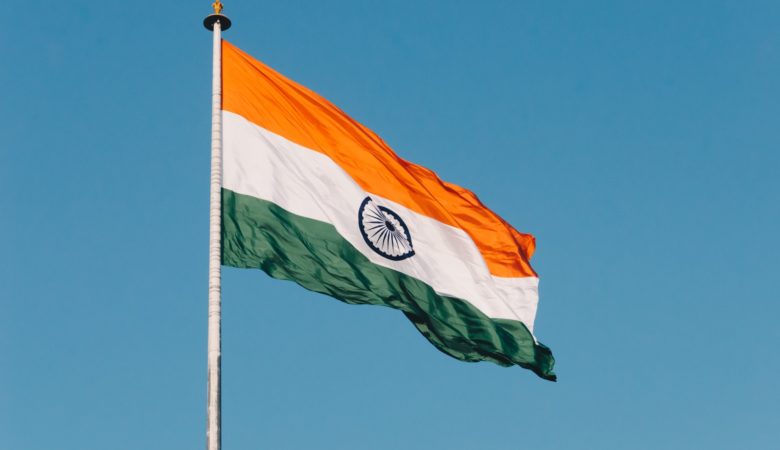Published on 15.07.2018 in Central Chronicle (English)
Recently there was Chipko Movement in Delhi to save 16500 grownup trees in areas of South of Capital City which were about to be cut for a residential colony. Taking cognizance of Delhi Chipko Movement, High Court of Delhi placed qualitative restrictions on cutting of these 16500 trees till further order. It reminded us of famous Chipko Movement of 1973 by Sundarlal Bahuguna in Garhwal Hills to protect green cover in that region. It appears to be beginning of new awakening in India to save and protect their surrounding green environment.
A recent report by Forest Survey of India had claimed that India’s forest cover increased by 0.94 % (from 7, 01,673 Square KM to 7, 08,273 Square KM) in period of 2001-2017. It also claimed a whopping increase in forest cover in Delhi in same period. Report also stated that Andhra Pradesh, Karnataka and Kerala registered maximum growth in green cover whereas North Eastern states recorded a marked decrease. 15 states of India have 33% of area or more under green cover however total area under forest remain static at 21% of total land area of India. 6 large states of India i.e. Punjab, Haryana, Rajasthan, Gujarat, Uttar Pradesh and Bihar have the lowest percentage of forests cover in India. Green cover in these 6 major states of India is dangerously low i.e. Gujarat (7.52%), Haryana (3.59%), Punjab (3.65%), Rajasthan (4.84%), Uttar Pradesh (6.09%) and Bihar (7.75%).
Now the moot question is as to how Forest Survey of India arrived at these data and how correct they are. Let us first examine data from other agencies of world about India’s forest area (green cover). The UN Global Forest Resources Assessment (GFRA) in 2015 had stated that India, Brazil, Indonesia, Vietnam, Ghana and Nigeria were rapidly losing forest (green) cover from 1990 to 2015. The study also showed that pace of losing forest cover has slowed down but is still within danger zone. GFRA methodology for calculating the forest reserve include natural forest, clear cut harvest, rubber plantations, tree seedlings and young trees but exclude agro-forestry and palm/oil palm plantations. GFRA data incorporate countries who submit their own data obtained through variety of methodologies i.e. forest inventories, satellite images or extrapolation of past data. Data varies from country to country and there is no consistency in methodology while calculating the green cover of a country.
Global Forest Watch (GFW) is a consortium of Google, United States Geological Survey (USGS) and NASA and it had reported that India is among the few countries which have lost green cover at fastest pace from year 2000-2010. GFW methodology doesn’t take into account the clear cut harvest and tree seedlings and young trees but includes natural forests, rubber plantations, agro forestry and palm/oil palm plantations for calculating the green cover. GFW data are consistent across the countries as they are based on maps of land use, stories from ground, and data from governments, businesses, NGOs or users on ground and also include satellite imageries.
The difference between methodologies as deployed by Forest Survey of India (FSI) and GFW/GFRA are starkly different at present. FSI has recently changed its methodology which stated, “Biennial assessment by FSI describe how much and where our forest cover is, irrespective of its origin, species, ownership, land use or legal status.” It says, “all trees stands with canopy density over 10% having an extent of more than 1 Ha (being the Minimum Mapping Unit) including bamboos, orchards, coconut, palm (mostly man-made plantations) etc. within recorded forest, private, community or institutional lands are thus reflected in the assessment of forest cover.”
Since the man-made plantations and 10% canopy for each hectare have been included in calculations methodology by FSI now, the picture appears rosier and better compared to what it was few years back. However the ground data and real picture of green depletion is evident everywhere. Large scale depletion of forest cover in Uttrakhand, Himachal Pradesh and J & K have caused extreme climates resulting into mass devastations of life and ecosystem of region in recent times. North Eastern states have recorded marked depletion of green cover and if not controlled it may lead to mass devastation in that area in few years’ time which will be fatal to its rich bio diversity.
Challenges ahead: in last few years we have been witness to the extreme climates in our geographical region and devastation it has brought is not hidden from anyone. Severe dry conditions have been noticed in hilly regions of Himalayas and raging fires due to severity of droughts in forests have caused irreparable damage to fragile eco systems. Depletion of forest cover has started affecting levels of sub-surface water leading to extreme dry conditions resulting to water scarcity as well as raging fires in summer. More and more landslides are also evidence that green cover is getting depleted at faster pace. Decline in miner forest produce is also an indication that eco system damage is reaching dangerous proportions.
River systems of hills of north India are backbone of indo-Gangetic plains and any kind of damage to eco system will play havoc with lives of people, properties and crop systems. Receding glaciers in Uttarakhand, reduced winter rains and excessive rains in monsoon in the form of cloud bursts have caused irreparable damages. Kedarnath tragedy is not hidden from anyone. Rapid urbanization has aggravated the problem further. More and more green cover is getting depleted every year to accommodate human needs but this urbanization is coming with heavy cost. This cost is being paid now by one and all and no one is getting spared from nature’s fury. Need is to prepare a detailed early warning systems, proper mapping of green cover, reboot afforestation programme, encourage people to go for eco-friendly industry and also include hilly people in this programme as a native of forest and not as poacher as livelihood of millions depend of forest produce. Else we can be satisfied with Green Cover reports by FSI that will have no meaning to common man.



Leave a Reply